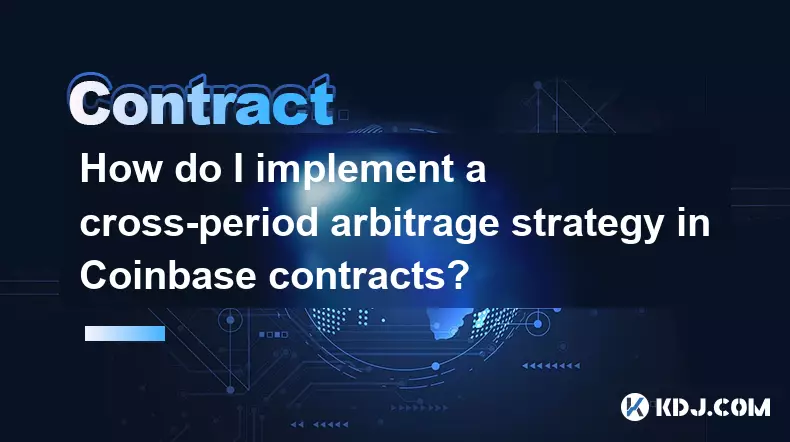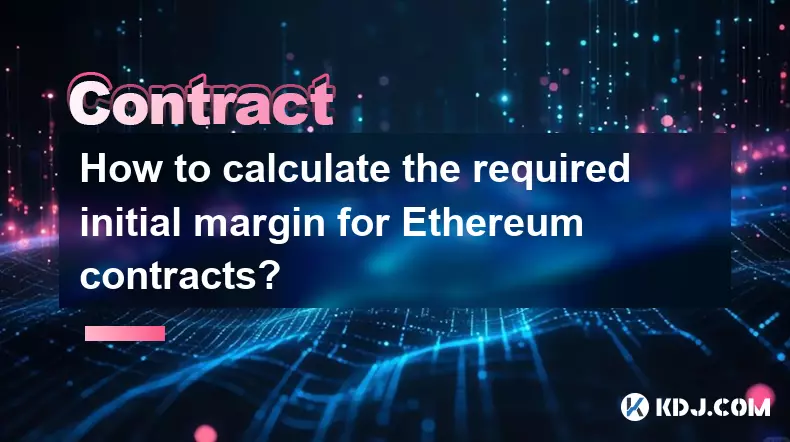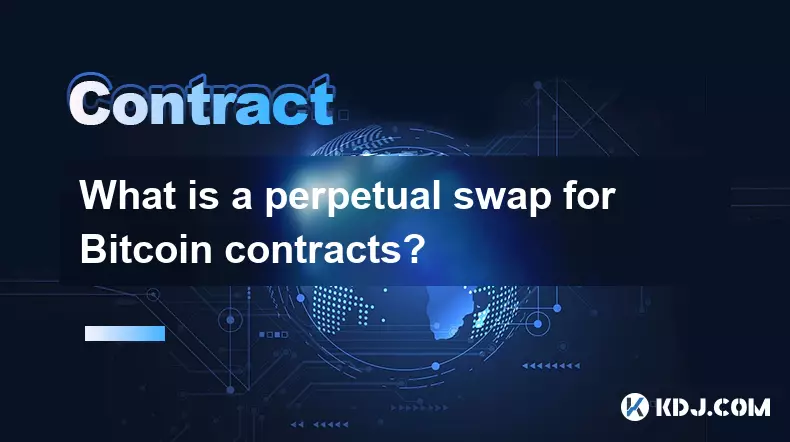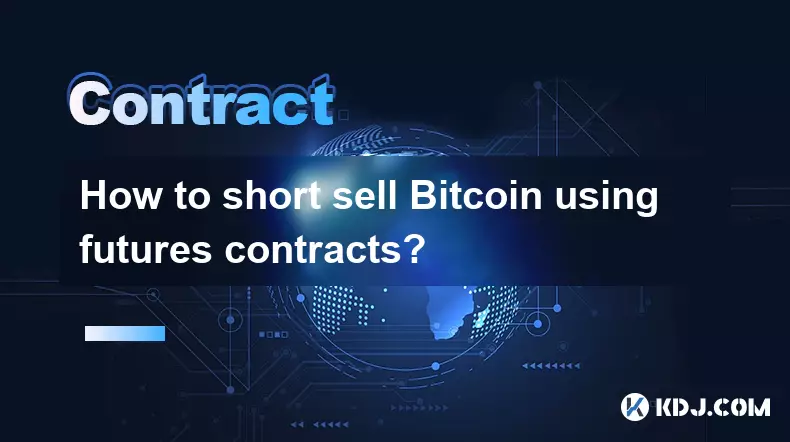-
 bitcoin
bitcoin $118548.520763 USD
3.67% -
 ethereum
ethereum $4352.564943 USD
4.79% -
 xrp
xrp $2.964058 USD
4.22% -
 tether
tether $1.000565 USD
0.05% -
 bnb
bnb $1028.372955 USD
1.46% -
 solana
solana $221.373507 USD
6.00% -
 usd-coin
usd-coin $0.999933 USD
0.02% -
 dogecoin
dogecoin $0.248633 USD
6.85% -
 tron
tron $0.341444 USD
2.38% -
 cardano
cardano $0.852946 USD
5.82% -
 hyperliquid
hyperliquid $47.869306 USD
6.15% -
 chainlink
chainlink $22.561476 USD
6.01% -
 ethena-usde
ethena-usde $1.001258 USD
0.05% -
 avalanche
avalanche $30.660000 USD
2.06% -
 stellar
stellar $0.400917 USD
9.76%
How do I implement a cross-period arbitrage strategy in Coinbase contracts?
Cross-period arbitrage on Coinbase exploits price differences between BTC/ETH futures of varying maturities, using real-time data and automated execution to capture spread convergence.
Sep 20, 2025 at 08:55 am

Cross-Period Arbitrage Strategy Overview
1. Cross-period arbitrage involves taking advantage of price discrepancies between futures contracts with different expiration dates on the same underlying asset. On Coinbase, this strategy can be applied to BTC or ETH perpetual and quarterly futures. Traders identify mispricing between near-term and far-term contracts and execute offsetting positions to capture risk-adjusted returns.
2. The foundation of this strategy lies in understanding the term structure of futures—whether the market is in contango (futures priced above spot) or backwardation (futures priced below spot). Persistent deviations from fair value provide entry opportunities. Monitoring funding rates for perpetuals and implied financing costs for fixed-term contracts helps pinpoint anomalies.
3. Execution requires simultaneous long and short positions across contract maturities. For example, going long a front-month BTC futures contract while shorting a deferred-month contract when the spread is abnormally narrow. Position sizing must account for contract multipliers and volatility to maintain delta neutrality.
4. Market impact and slippage are critical considerations. Large orders can move prices unfavorably, especially in less liquid tenors. Using limit orders and iceberg strategies minimizes footprint. Timing entries during high-volume periods improves fill quality and reduces execution risk.
5. Risk management includes setting stop-loss levels based on historical spread volatility and monitoring correlation breakdowns. Unexpected macro events or exchange-specific issues may cause temporary divergence. Regular rebalancing ensures alignment with evolving market conditions.
Data Monitoring and Signal Generation
1. Real-time data feeds from Coinbase’s API are essential for tracking bid-ask spreads, order book depth, and open interest across contract series. Custom scripts can calculate rolling z-scores of inter-contract spreads to detect statistical outliers.
2. Key metrics include basis (futures minus spot), annualized roll yield, and funding rate differentials. When the spread between two contracts deviates more than two standard deviations from its mean, a reversion signal is triggered.
3. Automated alerts notify traders when predefined thresholds are breached. These signals are validated against volume profiles to avoid false positives during low-liquidity windows such as weekends or holidays.
4. Backtesting frameworks simulate performance using historical tick data. Parameters like entry/exit rules, holding periods, and position scaling are optimized to maximize Sharpe ratio while minimizing drawdowns.
5. Integration with portfolio management tools allows seamless transition from signal detection to trade execution. APIs support programmatic order placement, reducing latency and human error.
Execution and Position Management
1. Orders are routed simultaneously to both legs of the arbitrage to prevent leg-in risk. Time-stamped coordination ensures minimal exposure to adverse moves during execution. Algo engines use TWAP or VWAP logic to blend into market flow.
2. Maintaining balance between contract exposures is vital to avoid directional bias. Adjustments are made dynamically as underlying prices shift. Delta hedging with spot positions may be used if futures liquidity becomes asymmetric.
3. Monitoring exchange announcements is crucial. Listing of new contracts, changes in margin requirements, or adjustments to settlement procedures can disrupt spread relationships. Immediate reassessment of open positions is required upon such events.
4. Exit strategies depend on convergence speed. Some trades resolve within hours; others take days. Trailing profit targets and hard stop levels prevent gains from eroding due to reversal in spread dynamics.
5. Post-trade analysis evaluates slippage, P&L attribution, and market impact. Insights feed into refining future execution protocols and improving edge durability.
Frequently Asked Questions
What instruments on Coinbase support cross-period arbitrage?BTC-USD and ETH-USD futures with varying expirations, including perpetuals and quarterly contracts, offer the necessary structure for cross-period strategies. Liquidity concentration in these pairs enhances feasibility.
How do funding rates affect cross-period arbitrage in perpetual contracts?Funding rates create carry costs or benefits that influence the relative pricing of perpetuals versus fixed-term futures. High positive funding incentivizes shorting perpetuals against longer-dated contracts where financing is embedded in price.
Can retail traders effectively implement this strategy?While possible, success depends on access to low-latency data, automated execution tools, and sufficient capital to absorb margin requirements. Manual trading faces challenges due to timing precision demands and rapid market adjustments.
What role does margin play in cross-period arbitrage?Each leg requires separate margin allocation. Exchanges apply portfolio margining in some cases, reducing total capital burden. However, sudden volatility spikes can trigger margin calls, necessitating conservative leverage usage.
Disclaimer:info@kdj.com
The information provided is not trading advice. kdj.com does not assume any responsibility for any investments made based on the information provided in this article. Cryptocurrencies are highly volatile and it is highly recommended that you invest with caution after thorough research!
If you believe that the content used on this website infringes your copyright, please contact us immediately (info@kdj.com) and we will delete it promptly.
- BlockDAG, DOGE, HYPE Sponsorship: Crypto Trends Shaping 2025
- 2025-10-01 00:25:13
- Deutsche Börse and Circle: A StableCoin Adoption Powerhouse in Europe
- 2025-10-01 00:25:13
- BlockDAG's Presale Buzz: Is It the Crypto to Watch in October 2025?
- 2025-10-01 00:30:13
- Bitcoin, Crypto, and IQ: When Genius Meets Digital Gold?
- 2025-10-01 00:30:13
- Stablecoins, American Innovation, and Wallet Tokens: The Next Frontier
- 2025-10-01 00:35:12
- NBU, Coins, and Crypto in Ukraine: A New Yorker's Take
- 2025-10-01 00:45:14
Related knowledge

What is the difference between futures and perpetual contracts for Bitcoin?
Oct 02,2025 at 11:54pm
Understanding Bitcoin Futures Contracts1. Bitcoin futures are derivative instruments that allow traders to speculate on the future price of Bitcoin at...

What is the maintenance margin for Bitcoin contracts?
Oct 02,2025 at 01:36am
Decentralized Exchanges Gain Momentum in 20241. Decentralized exchanges (DEXs) have seen a significant rise in trading volume, surpassing centralized ...

How to calculate the required initial margin for Ethereum contracts?
Oct 01,2025 at 06:01am
Understanding Initial Margin in Ethereum Futures1. The initial margin for Ethereum futures contracts represents the minimum amount of capital a trader...

What is a perpetual swap for Bitcoin contracts?
Oct 01,2025 at 08:18am
Understanding Perpetual Swaps in Bitcoin Trading1. A perpetual swap is a type of derivative contract that allows traders to speculate on the price of ...

What is the best platform for trading SOL contracts?
Oct 01,2025 at 06:36am
Understanding the Role of Decentralized Exchanges in Modern Crypto Trading1. Decentralized exchanges (DEXs) have reshaped how traders interact with di...

How to short sell Bitcoin using futures contracts?
Oct 01,2025 at 02:54am
Understanding the Role of Decentralized Exchanges in Crypto Trading1. Decentralized exchanges (DEXs) have become a cornerstone of the cryptocurrency e...

What is the difference between futures and perpetual contracts for Bitcoin?
Oct 02,2025 at 11:54pm
Understanding Bitcoin Futures Contracts1. Bitcoin futures are derivative instruments that allow traders to speculate on the future price of Bitcoin at...

What is the maintenance margin for Bitcoin contracts?
Oct 02,2025 at 01:36am
Decentralized Exchanges Gain Momentum in 20241. Decentralized exchanges (DEXs) have seen a significant rise in trading volume, surpassing centralized ...

How to calculate the required initial margin for Ethereum contracts?
Oct 01,2025 at 06:01am
Understanding Initial Margin in Ethereum Futures1. The initial margin for Ethereum futures contracts represents the minimum amount of capital a trader...

What is a perpetual swap for Bitcoin contracts?
Oct 01,2025 at 08:18am
Understanding Perpetual Swaps in Bitcoin Trading1. A perpetual swap is a type of derivative contract that allows traders to speculate on the price of ...

What is the best platform for trading SOL contracts?
Oct 01,2025 at 06:36am
Understanding the Role of Decentralized Exchanges in Modern Crypto Trading1. Decentralized exchanges (DEXs) have reshaped how traders interact with di...

How to short sell Bitcoin using futures contracts?
Oct 01,2025 at 02:54am
Understanding the Role of Decentralized Exchanges in Crypto Trading1. Decentralized exchanges (DEXs) have become a cornerstone of the cryptocurrency e...
See all articles










































































